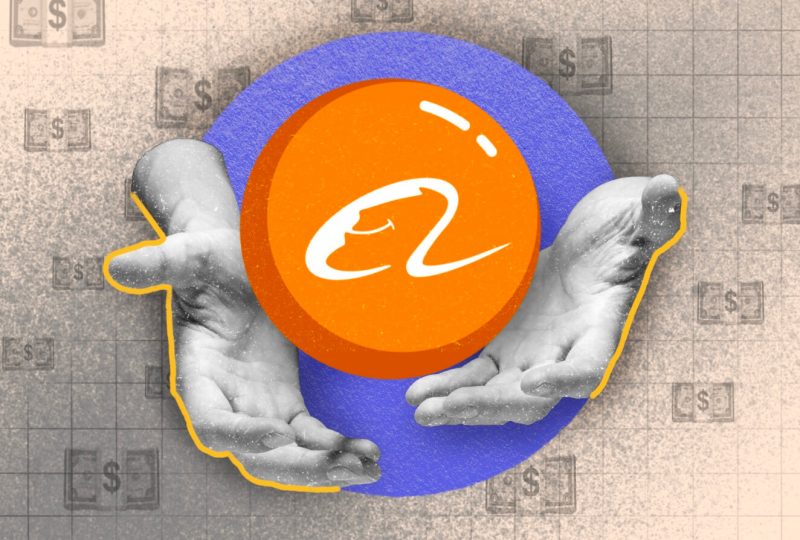‘Stagflation’ Is Coming. What You Need To Know.
Mar 02, 2022

There is little doubt that Russia's attack on Ukraine would raise prices, considering the region's production of oil and food products, as well as the reactions of governments and businesses throughout the globe. What is less obvious is whether the current era of increasing inflation will lead to stagflation.
Since Russia started the war, the price of wheat has increased by over 20%, while the price of crude oil has increased by roughly 10%. At the same time, the world's largest shipping firms, which control around one-third of the world's container fleet, have announced a halt to all shipments to and from Russia, according to Eddie Donmez, director of Amplify Trading. Those actions will worsen stresses in supply chains and contribute to price hikes for food, gasoline, and more while global central banks are only beginning to react to offset pricing pressures.
With yearly consumer price inflation in the United States currently at 7.5% — the highest since 1982 and much beyond the Federal Reserve's long-standing 2% objective — investors should prepare themselves for significantly higher prices for a long period of time. The issue then is whether central banks would prioritize price stability and continue tightening monetary policy at the cost of growth.
Given this background, it's understandable that investors and economists are concerned about the worst-of-both-worlds situation of high prices and declining growth. It's the economic call of the day, which shouldn't come as a surprise. However, how probable is stagflation? And what is an investor to do in this situation? Here's an explanation of what it is, why the chances of stagflation are increasing, and where investors might take refuge.
What exactly is stagflation?
Stagflation is defined by economists as times of high prices and weak growth. Stagflation is a central bank's greatest fear, according to Peter Boockvar, chief investment officer at Bleakley Advisory Group.
But what really is high, and what exactly is slow? It is dependent on who you ask. According to Jim Paulsen, chief financial strategist at the Luethold Group, stagflation isn't as unusual as it may seem. It's a word most people remember from the 1970s, but according to Paulsen, most recoveries conclude with stagflation, which typically precedes recession.
"Could there be stagflation? Sure," Paulsen comments. "In fact, we've already gotten into it."
How concerned should you be if stagflation has already set in?
While prices will undoubtedly remain higher for longer, Paulsen anticipates the consumer-price index to fall to roughly 4% by the end of the year as inflation-adjusted GDP falls from 5.7% in 2021 to around 4%. Slowing GDP and rising prices aren't nearly a formula for stagflation, he claims. The moment to be concerned, according to Paulsen, is when you have the most economically harmful characteristics of high pricing and weak development. Things become dicey when company profitability is endangered. Firms react by reducing employees, resulting in the type of severe unemployment that characterized the 1970s.
That sounds upbeat. Are others more concerned?
According to Lisa Shalett, chief investment officer at Morgan Stanley Wealth Management, the crisis in Ukraine has triggered derisking, which means bond markets are increasingly pricing in stagflation. U.S. inflation breakeven curves—which represent market forecasts for future inflation—have blown out. Two-year inflation projections are approaching 4%, as nominal yield curves, which are at their flattest since the pandemic began, reflect pessimistic economic growth forecasts.
"We remain wary of Federal Reserve policy uncertainty and execution; rebalancing of consumption; and the impact of inflation on profit margins," Shalett says, implying lower multiples, weaker revenue revisions, and wider term premiums and credit spreads. She notes that she senses complacency about the durability of operational profit leverage since the demand was likely pushed ahead by the COVID, and approximately three-quarters of the earnings forecast has been negative so far.
Daniel Szabo and Thomas Verbraken of MSCI paint a bleak picture in which the war in Ukraine rages on, and the West reacts with numerous rounds of long-term sanctions. Concerns of supply-chain constraints drive up longer-term inflation projections, further eroding company and consumer confidence and slowing economic growth as energy costs skyrocket.
"In this situation, central banks are trapped between two flames and cannot delay monetary tightening for very long," they warn, implying that equities would fall, credit spreads would increase, and the U.S. currency would strengthen against the euro.
Could the Federal Reserve instead choose to support growth rather than battle inflation?
The central bank seeks to choreograph a soft landing and prevent a recession as it prepares to remove exceptional economic help and raise interest rates this month. Shalett believes the Fed would favor growth above inflation, but she believes reversing its current planned policy course is "very dangerous, raising the bar for a later policy shift quite high."
Ed Yardeni, head of Yardeni Research, believes the Federal Reserve may raise its inflation goal to 3% from 2% in order to declare success on inflation sooner and with less damage to growth—even if this comes at the cost of greater price inflation in the long run.
What are the greatest areas to look at?
Given the growing uncertainty about how inflation, recession, and stagflation will turn out, Shalett advises investors to remain with quality, solid cash flows, and "profit achievability" that isn't fully priced. She sees potential in financials, materials, energy, consumer services, and healthcare, while domestic small-caps and developing markets may benefit from longer-term value support.
According to Paulsen of Leuthold Group, the chances favor the crisis in Ukraine ending reasonably soon, implying that inflation will slow from present levels in the next months. He believes that Australian and European equities would benefit the most from peace, and his preferred bet in such a situation is to purchase developing markets (excluding China).
"As a stock investor, I prefer the mix of fast and severe fear with excellent economic and company fundamentals," Paulsen comments, adding that investors can also explore equal-weighted exchange-traded funds, which provide small-cap cyclical exposure. This is in contrast to market-cap-weighted ETFs, which are dominated by companies like Amazon.com.
When it comes to full-fledged stagflation, experts agree commodities are the best bet. Bleakley Capital's Boockvar prioritizes metals as miners, oil firms, and fertilizer makers. Then there's cash, which, according to Boockvar, is likely the safest place to be during the type of stagflationary stretch that's already underway.




